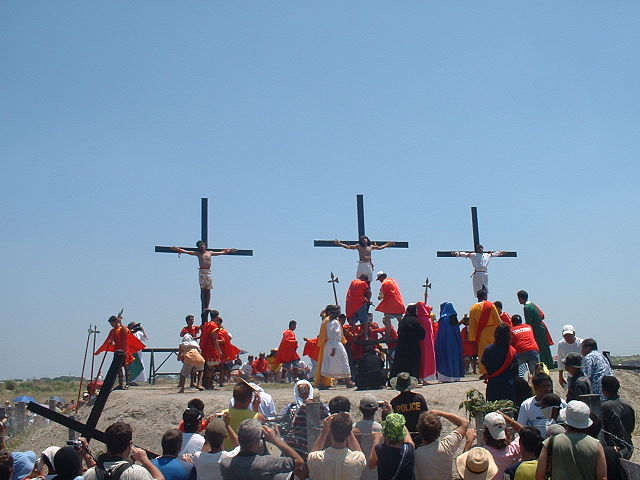The meaning of Easter
WHAT does Easter mean to you? For Jo-Anne Loquellano from the Philippines, it’s about love. She reflects on some of the unique ways her community observes the tradition of Easter.
The crowd watches transfixed as lanky men, bare-chested, bloodied and moaning, repeatedly flog themselves with whips made of thornbushes. On a mound where the mass of people is thickest, a man grimaces in pain as red-costumed soldiers drive inch-thick nails into his wrists before he is erected on a cross. The murmur of prayers continue despite the scorching midday sun beating down.
This is a scene not uncommon in parts of the predominantly-Catholic Philippines, where religious fervor reaches its height during the Holy Week – a period beginning Palm Sunday and ending on Easter Sunday.
Despite the Filipino Roman Catholic church’s repeated denouncing of such extreme displays of devotion, the practice persists, spurred on by strong beliefs in the merits of pasyon (passion) and penitensya (penitence) – suffering and penance for one’s sins.
But there are many other traditional practices which make the celebration of Easter and Holy Week in the Philippines, so unique:
- Visita Iglesia – a visit to seven or more churches to pray, including in the Way of the Cross – a prayer divided into 14 stations that mark the journey to Jesus’ death on Calvary. The number seven is biblically considered to be perfect, while the visit to seven churches is considered by some as a sacrifice to mirror the walk of faith.
- Senakulo – literally translated as “passion play”, this is a dramatisation typically by the youth on the sufferings of Jesus Christ before he died. Often the plays are reinterpreted to modern themes that both young and old can relate to, such as family conflict and tragedy, to make remembering the passion of Jesus more meaningful.
- Seven Last Words – a community reflection on the seven last phrases uttered by Jesus before his death, their significance then and their relation to present-day sufferings.
- Salubong – roughly meaning “to meet” or “to welcome”. This is a reenactment of Jesus and his mother Mary after his resurrection. The first Easter Mass of the day often follows this joyful celebration.
Many other religious activities follow, such as processions and retreats. A growing number of families also use Holy Week as a time to go on family holidays at scenic spots in the country or abroad.
But why the fixation on suffering, one might ask?
The answer most offered as an explanation by the Philippines’ top Catholic body, in line with Catholic teaching, is that love gives meaning to suffering and suffering is necessary to experience joy. And these lessons derive from the passion, death and resurrection of Christ, which, can be argued, is the whole point of Easter, after all. As Kahlil Gibran beautifully writes in The Prophet, “The deeper that sorrow carves into one’s being, the more joy it can contain”.
As such, the significance of Easter and Holy Week to many Filipinos is very fittingly referred to as “Mahal na Araw” (days of love), remembering the immense love of God – the Father of men – who exemplified the greatest sacrifice by laying down the life of His Son who died in order to win for everyone the joy of the resurrection.
In this sense, Easter is actually the biggest celebration for Catholics. Although the road to realising this joyful celebration can be paved with the drama of suffering, the Holy Week is at its best a reminder for Filipinos – and perhaps even for everyone – of the importance of love. Be it love for family and friends through togetherness and time out from work, love for the world as a socially-responsible citizen, and most of all, love for oneself in rest, relaxation and prayer.

